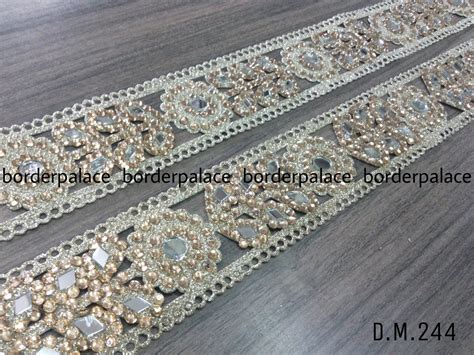India’s Booming Lace Industry
India stands as a global powerhouse in the lace manufacturing industry, boasting over 10,000 manufacturers that cater to the diverse needs of domestic and international markets. According to the Indian Lace Industries Association, the industry employs approximately 2.5 million skilled artisans, contributing significantly to the country’s economy.

Export Market Dynamics
India’s lace exports have witnessed a steady rise in recent years, with key markets including the United States, France, Italy, and Japan. The Export Promotion Council for Handicrafts (EPCH) estimates that lace exports from India reached $5.5 billion in 2022, highlighting the industry’s export potential.
Competitive Advantages
Several factors contribute to India’s competitive edge in lace manufacturing:
- Low Labor Costs: India offers highly skilled artisans at significantly lower labor costs compared to other manufacturing hubs, enabling manufacturers to produce high-quality laces at competitive prices.
- Skilled Artisanship: Indian lace manufacturers possess generations of inherited skills and expertise, ensuring the intricate and artistic detailing of their products.
- Raw Material Availability: India has a well-established supply chain for raw materials, such as cotton, silk, and synthetic fibers, providing manufacturers with access to a wide range of materials at competitive prices.
Key Manufacturing Hubs
The lace manufacturing industry is concentrated in specific regions of India, each with its distinct specialization:
- Surat (Gujarat): Surat is the largest lace manufacturing hub in India, renowned for its production of embroidered and chemical laces.
- Kolkata (West Bengal): Kolkata specializes in traditional hand-embroidered laces, featuring intricate designs and intricate needlework.
- Jaipur (Rajasthan): Jaipur is known for its exclusive handcrafted laces, often using local mirror work and embellishments.
Lace Types and Applications
Indian lace manufacturers offer a vast array of lace types, including:
- Embroidered Lace: Ornate laces featuring intricate embroidery patterns, often using zari, beads, and sequins.
- Chemical Lace: Laces created using chemical etching techniques, resulting in delicate and intricate designs.
- Metallic Lace: Laces incorporated with metallic threads, offering a luxurious and shimmering effect.
These laces find applications in a diverse range of industries, such as:
- Fashion and Apparel: Laces embellish garments, lingerie, and accessories, adding a touch of elegance and refinement.
- Home Furnishings: Laces enhance curtains, tablecloths, and bed linens, providing a sophisticated and decorative accent.
- Accessories: Lace is used in the creation of jewelry, scarves, and handbags, adding a touch of whimsy and charm.
Emerging Trends
The lace manufacturing industry is continually evolving to meet changing consumer preferences and market demands. Some emerging trends include:
- Sustainability: Consumers increasingly demand sustainable and eco-friendly products, prompting manufacturers to adopt eco-conscious practices and materials.
- Innovation: Manufacturers are experimenting with new techniques and materials to create unique and eye-catching lace designs.
- Customization: Customers desire personalized and customizable laces, leading manufacturers to offer a wider range of customization options.
Challenges and Opportunities
Despite its strengths, the lace manufacturing industry faces certain challenges:
- Rising Competition: Global competition from countries like China and Bangladesh poses challenges for Indian manufacturers to maintain their market share.
- Skill Gap: The industry faces a shortage of skilled artisans, affecting the production capacity and quality of lace products.
- Technological Advancements: Rapid technological advancements in lace manufacturing techniques may require manufacturers to invest in new equipment and training to remain competitive.
Government Initiatives
The Indian government has implemented various initiatives to support and promote the lace manufacturing industry:
- Skill Development Programs: The Ministry of Textiles launches skill development programs to train and upskill artisans in lace manufacturing techniques.
- Export Promotion Programs: The EPCH provides financial and technical assistance to manufacturers to expand their export markets.
- Research and Development: The National Institute of Fashion Technology (NIFT) conducts research and development projects to innovate new lace designs and applications.
Conclusion
India’s lace manufacturing industry continues to flourish, offering a wide range of high-quality and competitively priced laces to meet the demands of domestic and international markets. With its skilled artisanship, competitive advantages, and government support, the industry is well-positioned to maintain its leadership position and capitalize on emerging opportunities.
Table 1: Major Lace Manufacturing Hubs in India
| City | Specialty |
|---|---|
| Surat | Embroidered and Chemical Laces |
| Kolkata | Hand-Embroidered Laces |
| Jaipur | Handcrafted Laces |
| Chennai | Machine-Made Laces |
| Mumbai | Designer Laces |
Table 2: Export Market Dynamics
| Year | Export Value (USD) |
|---|---|
| 2018 | $4.5 billion |
| 2019 | $5.0 billion |
| 2020 | $4.8 billion |
| 2021 | $5.2 billion |
| 2022 | $5.5 billion |
Table 3: Lace Types and Applications
| Lace Type | Applications |
|---|---|
| Embroidered Lace | Garments, Lingerie, Accessories |
| Chemical Lace | Home Furnishings, Curtains, Tablecloths |
| Metallic Lace | Jewelry, Scarves, Handbags |
| Guipure Lace | Bridal Wear, Evening Gowns, Haute Couture |
| Needlepoint Lace | Decorative Accents, Wall Hangings, Collector’s Items |
Table 4: Challenges and Opportunities in Lace Manufacturing
| Challenge | Opportunity |
|---|---|
| Rising Competition | Explore Niche Markets, Innovate New Designs |
| Skill Gap | Government Skill Development Programs, Technological Advancements |
| Technological Advancements | Embrace Innovation, Invest in New Equipment and Training |
| Changing Consumer Preferences | Research and Development, Customization Options |
